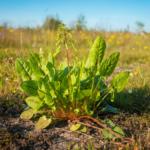Alstroemeria, also referred to as the Peruvian Lily or Lily of the Incas, is a breathtaking flowering plant celebrated globally for its vivid hues, detailed blossoms, and exceptional durability as a cut flower. Whether you’re a gardening enthusiast, a floral arranger, or simply someone captivated by beautiful blooms, this guide will provide everything you need to know about Alstroemeria — from its origins and varieties to cultivation tips and care.
What Is Alstroemeria?
Alstroemeria, encompassing species such as Alstroemeria aurantiaca and others, is a genus of flowering plants indigenous to South America, with notable populations in countries like Peru, Brazil, and Chile. Its name honors the Swedish botanist Clas Alströmer, who discovered the plant in the 18th century. The plant features bushy, herbaceous stems topped with clusters of trumpet-shaped flowers that come in an array of vibrant shades.
Key Features of the Peruvian Lily
- Appearance: Clusters of six-petaled flowers, often with contrasting streaks or spots.
- Colors: Widely available in shades of orange, pink, red, yellow, white, purple, and bi-color combinations.
- Blooming Season: Typically blooms from late spring through summer, with some varieties flowering into fall.
- Growth Habit: Perennial, with tuberous roots, forming dense clumps over time.
Popular Varieties and Cultivars
Alstroemeria offers a diverse range of cultivars suited for different purposes:
- Standard Varieties: Classic, single-color blooms like orange or pink.
- Bicolor and Multicolor: Flowers with contrasting streaks and multiple shades.
- Dwarf Varieties: Compact plants ideal for containers and small gardens.
- Elevated Varieties: Perfect for bouquet designs, these cultivars can grow up to 3 feet tall.
Popular cultivars include ‘Inca’, ‘Princess Aiko’, and ‘Peruvian Flame’.
How to Grow and Care for Alstroemeria
Climate and Location
- Prefers mild, temperate climates.
- Thrives in USDA Zones 7-10 but can be grown in cooler zones with protection.
- Requires full sun to partial shade; in warmer areas, providing some afternoon shade helps protect the plants.
Soil Requirements
- Well-draining, fertile soil with organic matter.
- Slightly acidic to neutral pH (6.0-7.0).
- Mulching helps conserve moisture and suppress weeds.
Planting Tips
- Plant tubers in early spring after the danger of frost has passed.
- Space plants about 12-18 inches apart.
- Plant tubers with the crown just below the soil surface.
Watering and Fertilization
- Keep soil consistently moist but not waterlogged.
- Apply a balanced, water-soluble fertilizer monthly throughout the growing season to support healthy growth.
- Reduce watering in winter if grown indoors or in cooler climates.
Maintenance
- Remove spent flowers to encourage continuous blooming.
- Divide overcrowded clumps in early spring or fall.
- Mulch annually to protect roots and retain moisture.
Propagation Methods
- Division: Best done in early spring or fall by dividing tubers.
- Seeds: Less common; can be grown from seeds, but flowering takes longer.
- Cuttings: Sometimes propagated from stem cuttings with rooting hormone.
Pests and Diseases
- Common Pests: Aphids, spider mites, and slugs.
- Diseases: Fungal issues like root rot if overwatered; powdery mildew in humid conditions.
- Control Tips: Ensure proper drainage, avoid overhead watering, and remove infected plant material.
Uses and Arrangements
- Cut Flowers: Known for their long vase life, making them popular in bouquets.
- Garden Plants: Adds color and texture to perennial borders and containers.
- Symbolism: Represents friendship, prosperity, and good fortune in many cultures.
Tips for Long-Lasting Blooms
- Change water regularly in floral arrangements.
- Cut stems early in the morning.
- Remove leaves below water level to prevent rot.
- Use floral preservatives for added longevity.
Final Thoughts
Alstroemeria, the Peruvian Lily, is a versatile, colorful, and resilient addition to gardens and floral displays alike. With proper care, it will reward you with months of vibrant blooms and stunning bouquets. Whether you’re planting a garden bed or creating a floral centerpiece, Alstroemeria’s beauty and symbolism make it a favorite among flower lovers worldwide.
Frequently Asked Questions
Q: Is Alstroemeria poisonous?
A: Yes, all parts of the plant are mildly toxic if ingested, so keep it away from pets and children.
Q: How long do Alstroemeria flowers last?
A: Cut flowers can last up to two weeks with proper care.
Q: Can I grow Alstroemeria indoors?
A: Yes, in bright, indirect light with proper watering and care, it can thrive indoors as a potted plant.
Embrace the vibrant charm of the Peruvian Lily and enjoy its spectacular blooms in your garden or home!








